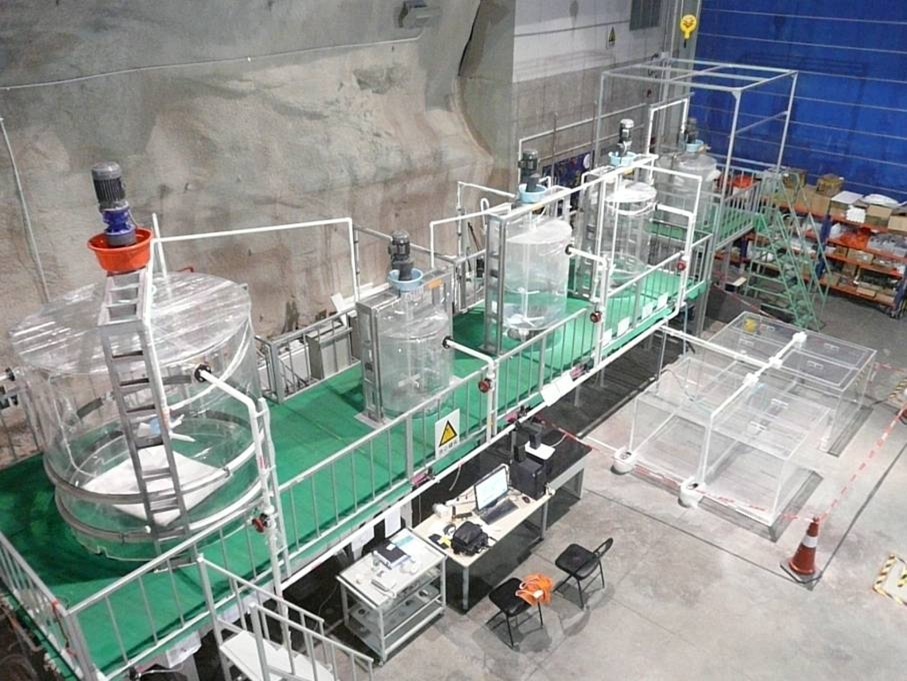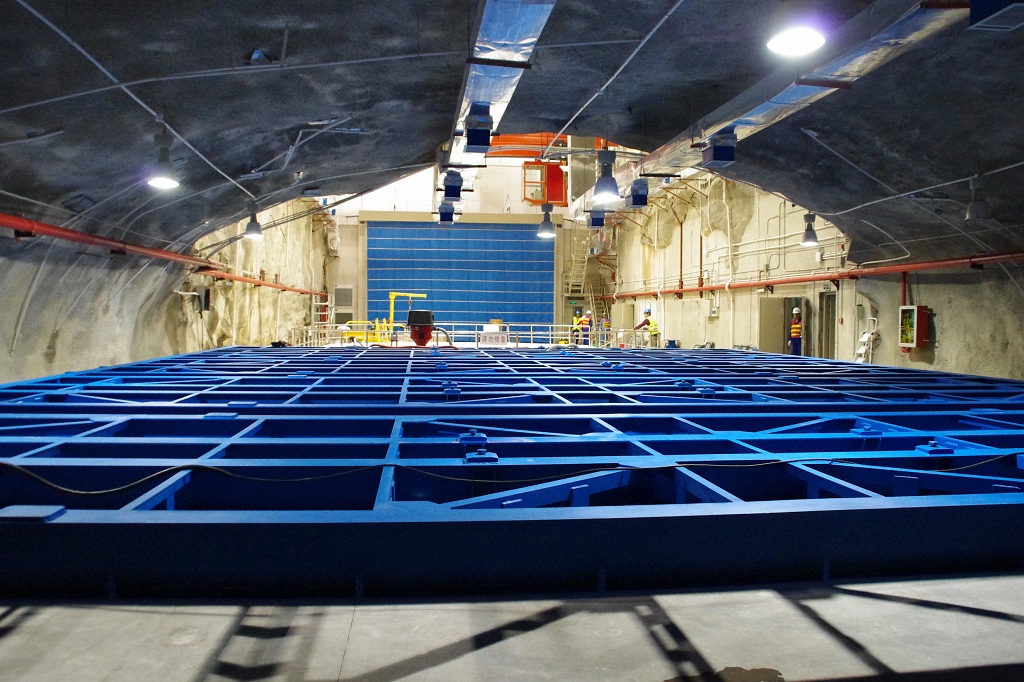- Facilities at a Glance
- All Facilities
- Material
- Earth System and Environment
- Engineering Technology
- Space and Astronomy
- Particle and Nuclear Physics
- Energy
- Biology
- 1
- 2
- 3
Daya Bay Reactor Neutrino Experiment
The Daya Bay Reactor Neutrino Experiment (hereinafter referred to as “Daya Bay Experiment”) is a neutrino-oscillation experiment designed to measure the mixing angle θ13 using anti-neutrinos produced by the reactors of the Daya Bay Nuclear Power Plant (NPP) and the Ling Ao NPP.
Daya Bay Experiment was initiated in 2006 and started the construction of tunnels and underground experiment halls in 2007. The project team started accumulating data by using six detectors on December 24, 2011. The eight detectors of Daya Bay Experiment at far and near points started joint data taking on October 19, 2012.
On March 8, 2012, Daya Bay Experiment discovered a kind of new neutrino oscillation model for the first time in the world (corresponding to neutrino mixing angle θ13), and was selected into the top ten scientific breakthroughs of the year 2012 by the U.S. "Science" magazine. A few months later, using 139 days of data, Daya Bay updated the result and improved the significance to 7.7 standard deviations.
In 2013, Daya Bay reported the first direct measurement of the electron antineutrino mass-squared difference( Δm2ee). This result is consistent with Δm2μμ measured by muon neutrino disappearance.
In 2014, based on 217 days of day taken with 6 detectors, combined with 404 days of data taken with all 8 detectors, Daya Bay improved the precision of θ13 and Δm2ee by almost a factor of two, reaching 6% and 5%, respectively. Besides, Daya Bay reported the first measurement of reactor flux and preliminary spectrum. A search for light sterile neutrino mixing was performed and gave a new limit. Analysis of neutron captured on hydrogen samples rules out a zero θ13 independently at 4.6 standard deviations.
In 2015, Daya Bay improved and justified the measurement of the neutrino oscillation parameters. Meanwhile, Daya Bay achieved the first measurement of the reactor antineutrino spectrum, and found an excess of measured neutrinos around 6MeV compared to the prediction. The local significance is greater than 4 standard deviations. This result provided a new evidence to the study of the so-called Reactor Antineutrino Anomaly, and to the improvement of the reactor antineutrino model.
In 2016, Daya Bay improved the measurement of the neutrino oscillation parameters with 1230 days of data. The precisions of sin22 θ13 and Δm2ee were improved to be 3.9% and 3.3% respectively. The measurement of the reactor antineutrino flux and spectrum were also improved with a data sample over 1 million antineutrino events. The significance of the excess of measured neutrinos around 6MeV compared to the prediction reached 4.4 standard deviations. A combined analysis was performed with the dataset from both Daya Bay and MINOS, an accelerator neutrino experiment, at the different reaction channels for neutrinos. New limit of sterile neutrino rejection was achieved.
Accurate measurement is the foundation of scientific discoveries and breakthroughs. This experiment will last to 2020, raise the measurement accuracy of sin22θ13 and provide accurate input of initial values for the research of neutrino physics, astrophysics, cosmology and other frontier sciences. In addition, the experiment will also carry out reactor neutrino power spectrum measurement and other relevant researches. These researches are a matter of significance to the Grand Unified Theory of elementary particle physics and to look for and identify new physics.
NOTICE
-
Call for Proposals for HEPS Phase II Beamlines May 23,2022





